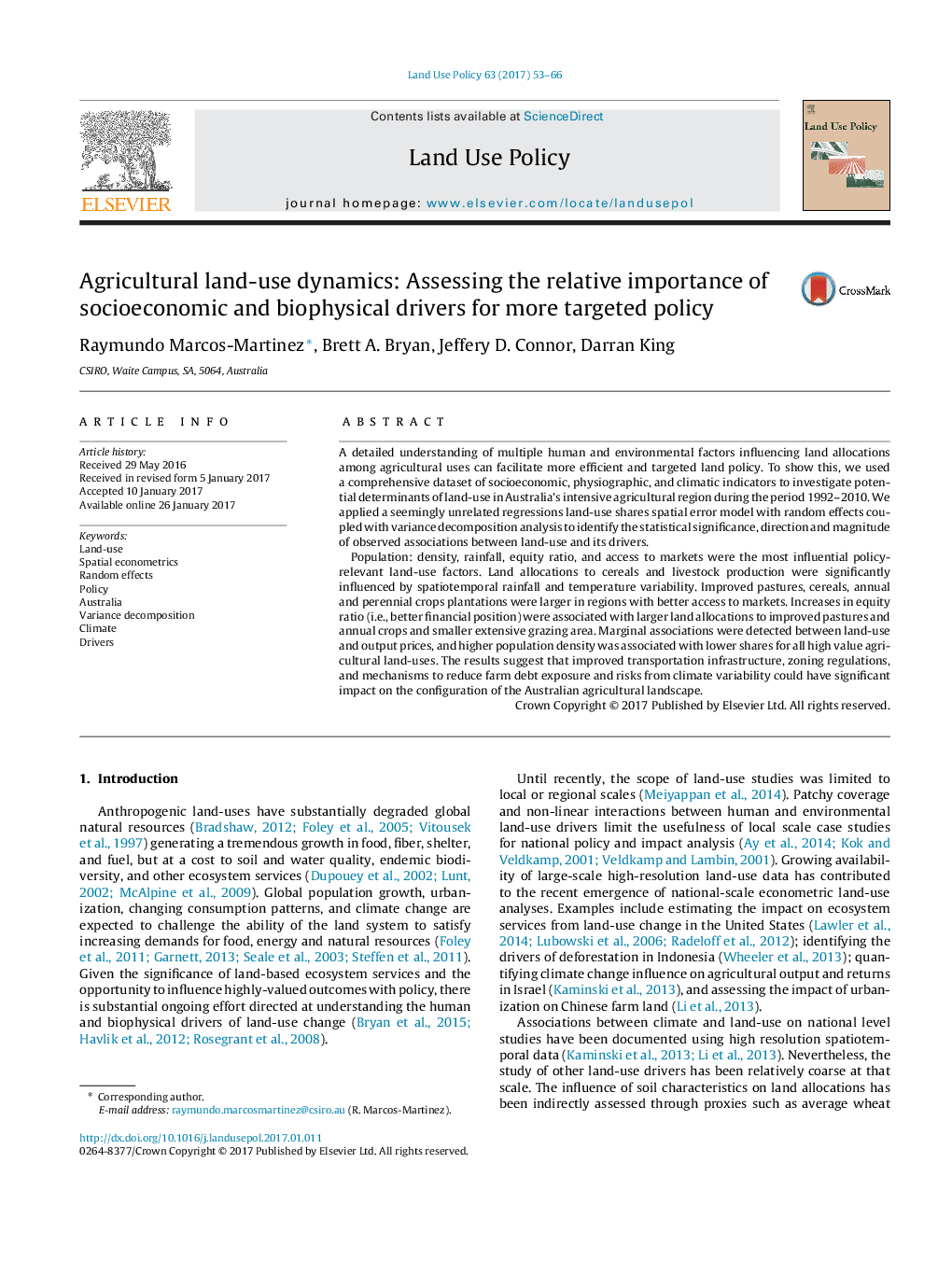| کد مقاله | کد نشریه | سال انتشار | مقاله انگلیسی | نسخه تمام متن |
|---|---|---|---|---|
| 6460971 | 1421820 | 2017 | 14 صفحه PDF | دانلود رایگان |
- Spatiotemporal analysis of agricultural land use in Australia at a continental scale.
- Applied a spatial error model with random effects and variance decomposition.
- Assessed the statistical significance and relative importance of land use drivers.
- Population density, farm-debt, access to markets, and climate were key factors.
- The findings could be used to develop more efficient and targeted land policy.
A detailed understanding of multiple human and environmental factors influencing land allocations among agricultural uses can facilitate more efficient and targeted land policy. To show this, we used a comprehensive dataset of socioeconomic, physiographic, and climatic indicators to investigate potential determinants of land-use in Australia's intensive agricultural region during the period 1992-2010. We applied a seemingly unrelated regressions land-use shares spatial error model with random effects coupled with variance decomposition analysis to identify the statistical significance, direction and magnitude of observed associations between land-use and its drivers.Population: density, rainfall, equity ratio, and access to markets were the most influential policy-relevant land-use factors. Land allocations to cereals and livestock production were significantly influenced by spatiotemporal rainfall and temperature variability. Improved pastures, cereals, annual and perennial crops plantations were larger in regions with better access to markets. Increases in equity ratio (i.e., better financial position) were associated with larger land allocations to improved pastures and annual crops and smaller extensive grazing area. Marginal associations were detected between land-use and output prices, and higher population density was associated with lower shares for all high value agricultural land-uses. The results suggest that improved transportation infrastructure, zoning regulations, and mechanisms to reduce farm debt exposure and risks from climate variability could have significant impact on the configuration of the Australian agricultural landscape.
Journal: Land Use Policy - Volume 63, April 2017, Pages 53-66
